-
Jamey S Johnson
3Ok so I'm always in the habit of sewing on my sew foam but have talked to and seen some trimmers that glue all there sew foam on there material. Well I have tried gluing with some good results but would like to hear from everybody on there method. What works best for you and your thoughts about the pros and cons of both. -
Josh Dension
4I use tac glue on most projects unless its leather. I spray a light coat and it dissolves over time so it doesnt cause any creases in the material after regular use. -
 Keith Mayne
38I was trained to glue the material on however recently I have been sewing on.With it sewn on it does seem to feel nicer.I stil glue if its a quick, cheap job.I was using some fabric last week which needed glueing as it moved so much when trying to sew the foam on.
Keith Mayne
38I was trained to glue the material on however recently I have been sewing on.With it sewn on it does seem to feel nicer.I stil glue if its a quick, cheap job.I was using some fabric last week which needed glueing as it moved so much when trying to sew the foam on.
How does everyone get on with sewing listing tubes onto sewn down foamed material, when the tube is attached across the center of a panel? I've found the top and bottom move around a lot when sewing it on. -
 Michael cullen
6Yep perimeter stitch then stitch in futes or patterns i also back every thing with calico.
Michael cullen
6Yep perimeter stitch then stitch in futes or patterns i also back every thing with calico.
Just a habit i think it looks nicer than relying on the ceracks backing of the foam -
 Jens Jesberg
50I just glue in really rare situations. Mostly i perimeter stich my material. When I glue i use a very low athesive and low temperature resistant glue in a spray can (I call it "stamp-glue" because its just stick and dont glue ;) )
Jens Jesberg
50I just glue in really rare situations. Mostly i perimeter stich my material. When I glue i use a very low athesive and low temperature resistant glue in a spray can (I call it "stamp-glue" because its just stick and dont glue ;) )
What is "calico"? Weaved cotton LIKE #? The horizontal thread goes over one vertical and then under a vertical and always so on? -
 Michael cullen
6Calico is a cotton material gives the flutes a fuller look and the hold longer can look at a job done 5to10 years later and they have held their form
Michael cullen
6Calico is a cotton material gives the flutes a fuller look and the hold longer can look at a job done 5to10 years later and they have held their form -
 Andy Laird
43I always sew mine. If glued it can cause some unwanted wrinkles. Especially if you are using a foam glue like Du-bois 301 foam glue, or misty foam glue. These adhesives do not harden so they are good for gluing foam to foam without getting a hard glue line that can be felt under a cover. This type of glue can be separated with heat (At least the stuff I have used). If you use this for sew foam then it can possibly separate and re-stick causing some nasty lumps.
Andy Laird
43I always sew mine. If glued it can cause some unwanted wrinkles. Especially if you are using a foam glue like Du-bois 301 foam glue, or misty foam glue. These adhesives do not harden so they are good for gluing foam to foam without getting a hard glue line that can be felt under a cover. This type of glue can be separated with heat (At least the stuff I have used). If you use this for sew foam then it can possibly separate and re-stick causing some nasty lumps.
Think of panels you cover, you float your material on some parts, and glue solid on others. In some areas the material needs to move independent from the sub straight and other times that would be a hindrance. In reality gluing sew-foam would be fine for some parts but not others. I just sew mine to lessen the confusion.
We have all seen the factory stuff that is foam backed (like foam back headlining) That is not actually glued it's flame bonded. A process where a large machine has a flame bar. The material is passed under the bar and the foam on top (or vice versa) then it is sandwiched between rollers immediately after. The flame slightly melts the foam permanently adhering to the material. This method can still cause wrinkles depending on the flexibility of the foam. flame bonding -
 Mark Booth
0I usually lightly glue with a kind of dry spray to hold everything in place while i perimeter sew and add listing strips etc. the light dry spray lets go pretty quickly tho, so you don't want to leave it sitting round to long before sewing.
Mark Booth
0I usually lightly glue with a kind of dry spray to hold everything in place while i perimeter sew and add listing strips etc. the light dry spray lets go pretty quickly tho, so you don't want to leave it sitting round to long before sewing.
I also use calico or a light canvas for backing fluted etc. -
 Gareth Judd
12Depends on where you are but flutes to me are tuck and roll.
Gareth Judd
12Depends on where you are but flutes to me are tuck and roll.
i use no glue just perimeter sew -
 Keith Mayne
38I did some headrests the other day with perimeter sewn 3mm scrim and ended up having problems with the foam rucking/creasing up and causing lumps in the headrest.
Keith Mayne
38I did some headrests the other day with perimeter sewn 3mm scrim and ended up having problems with the foam rucking/creasing up and causing lumps in the headrest. -
 Michael cullen
6Ok maybe its a down under thing 3 types of flutes top sewin.
Michael cullen
6Ok maybe its a down under thing 3 types of flutes top sewin.
Back sewen wich means the stitching is not seen.
And back sewen and filled where the vinyl is stithced to the backing material then foam is inserted into the pocket that is created using two strips of alloy then the strips are removed to leave the foam filling the pocket.
I will try and find some examples and maybe a translation for you on terminology. -
Jack Purdue
18
Keith, when sewing headrests to foam, ALWAYS leave the front and back loose. The headrests have such a sharp radius that the foam can bunch up around the top. If you leave at least one end free, you can reach up and pull the foam down to get that wrinkle smoothed out. -
 Keith Mayne
38Thanks for that, I'll try it neat time.
Keith Mayne
38Thanks for that, I'll try it neat time.
Always trying to improve my work.
Normally I would use 6mm or 10mm scrim on the center section of a seat and 3mm on the sides of the faces however they never look as smooth or tight as the pics I see others post on instagram should I move up to using 6mm all over? -
 Chris Vining
48i use 12mm most of the time with 12mm on side bolsters or 6mm depending on the foam its going over .... you can also get 16 scrim from segal trimming for fatter flutes
Chris Vining
48i use 12mm most of the time with 12mm on side bolsters or 6mm depending on the foam its going over .... you can also get 16 scrim from segal trimming for fatter flutes -
 Cody Lunning
39When making flutes is Caicos the preferred method vs see foam? But to also add in, I perimeter sew vs glue.
Cody Lunning
39When making flutes is Caicos the preferred method vs see foam? But to also add in, I perimeter sew vs glue. -
 kurt moore
7I perimeter stitch but on occasion with very large pleats I found glue helps. Just went through this with some large boat cushions that are 4ft. x 7 ft. First attempt i only did perimeter stitch and had lots of waves so the next one I glued and it turned out nice and smooth. This is a funny topic to me cause some say you MUST NEVER glue and others say you MUST glue. I believe it all depends on project.
kurt moore
7I perimeter stitch but on occasion with very large pleats I found glue helps. Just went through this with some large boat cushions that are 4ft. x 7 ft. First attempt i only did perimeter stitch and had lots of waves so the next one I glued and it turned out nice and smooth. This is a funny topic to me cause some say you MUST NEVER glue and others say you MUST glue. I believe it all depends on project. -
 Eric Gordon
41I agree with you Kurt, it all depends on the project. If I'm undecided to glue or not, I'll try a sample of each to see what will work best.
Eric Gordon
41I agree with you Kurt, it all depends on the project. If I'm undecided to glue or not, I'll try a sample of each to see what will work best. -
 Andy Laird
43Didn't think to mention this earlier. For those that have trouble when perimeter sewing long or awkward parts. Use your stapler's pin side to hold everything in place, then just pull the pins as your sewing.
Andy Laird
43Didn't think to mention this earlier. For those that have trouble when perimeter sewing long or awkward parts. Use your stapler's pin side to hold everything in place, then just pull the pins as your sewing.
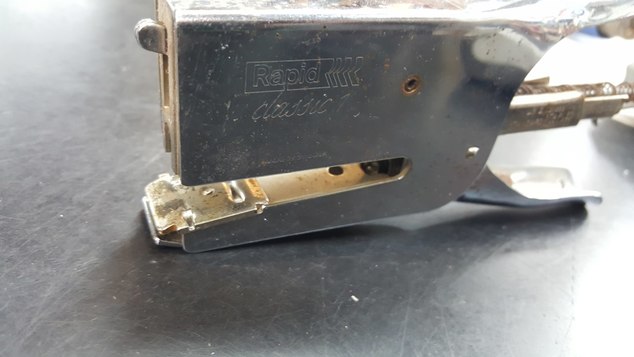
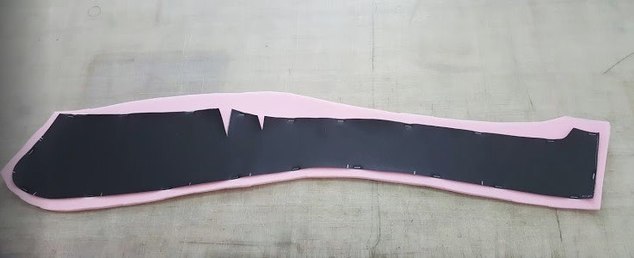
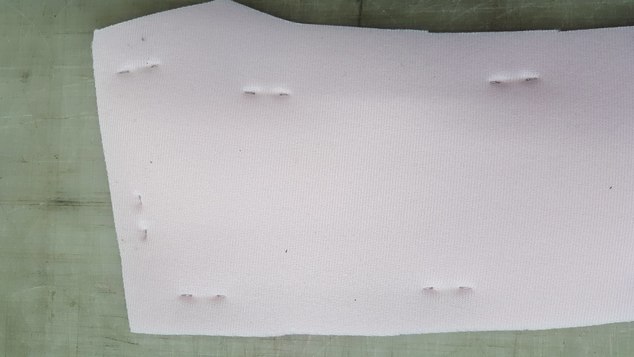
-
 Dylan Parker
2I tend to glue most pieces (specifically on seats) as it seems to make the whole process a little easier with the same quality end product. This is especially true when sewing pleats or diamonds or whatever in my eyes. However, on backrest covers, I just spray the top of foam and not backside of material, that way it doesn't really "stick" but it makes it easier to sew yet doesn't wrinkle as easily when rolled onto the seat. Also when putting on the seat covers, even on cushions, I steam the backside of the foam really well just before installing. It releases the glue for a minutes so you don't get stubborn wrinkles. Every project is different though.
Dylan Parker
2I tend to glue most pieces (specifically on seats) as it seems to make the whole process a little easier with the same quality end product. This is especially true when sewing pleats or diamonds or whatever in my eyes. However, on backrest covers, I just spray the top of foam and not backside of material, that way it doesn't really "stick" but it makes it easier to sew yet doesn't wrinkle as easily when rolled onto the seat. Also when putting on the seat covers, even on cushions, I steam the backside of the foam really well just before installing. It releases the glue for a minutes so you don't get stubborn wrinkles. Every project is different though.
Welcome to The Hog Ring!
This forum is only for auto upholstery pros, apprentices and students. Join today to start chatting.
More Discussions
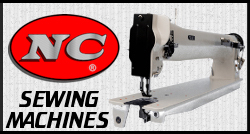
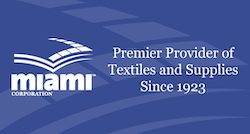



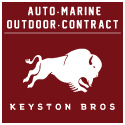


- Terms of Service
- Useful Hints and Tips
- Sign In
- Created with PlushForums
- © 2025 The Hog Ring














